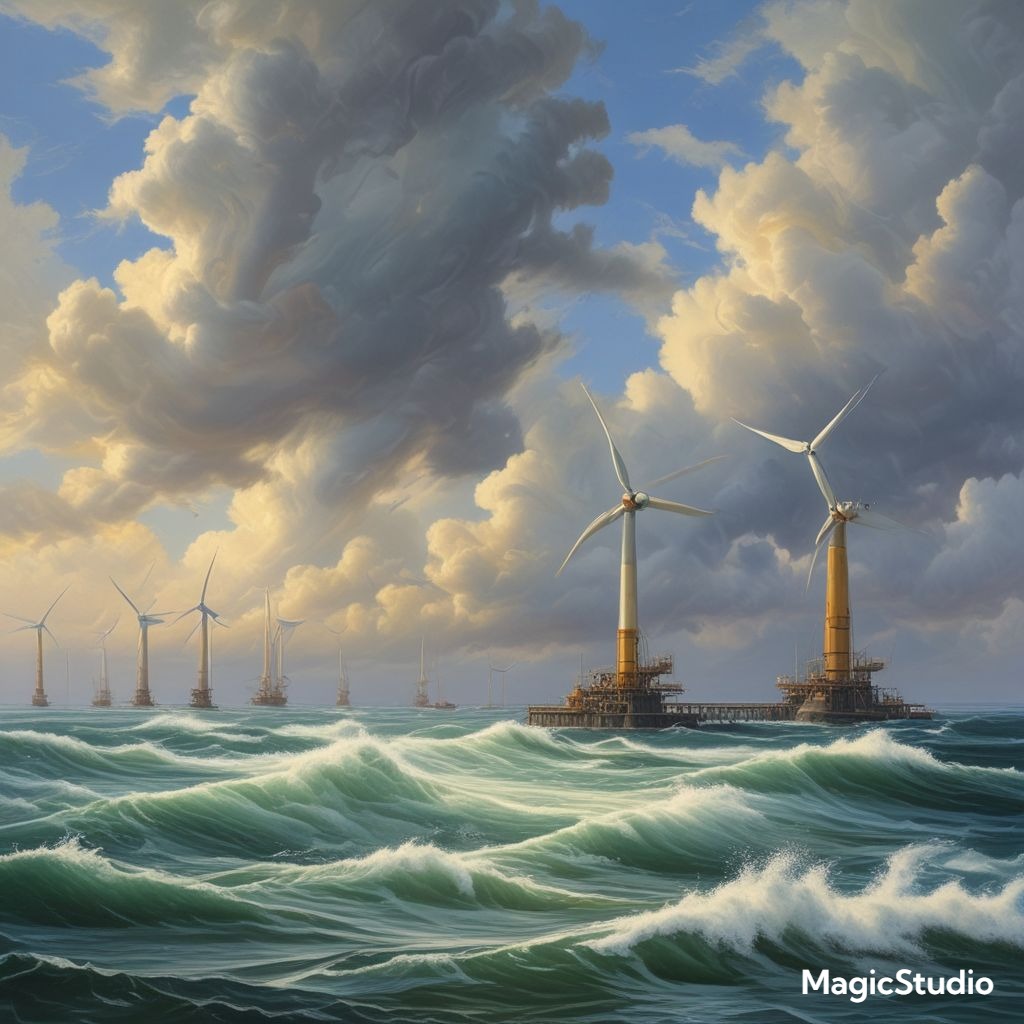
The oil and gas industry is undergoing a significant transformation as global demand for clean energy continues to rise. One of the most promising developments is the integration of offshore wind farms into the energy landscape. While traditionally focused on fossil fuel extraction, many oil and gas companies are now investing in offshore wind farms as a way to diversify their portfolios, reduce carbon emissions, and meet the world’s growing demand for renewable energy.
Offshore wind farms are large-scale renewable energy projects that use wind turbines located in bodies of water to generate electricity. The turbines are typically installed in areas with strong and consistent wind patterns, such as coastlines and open seas. Offshore wind farms have several advantages over their onshore counterparts, including higher wind speeds, larger available areas for installation, and minimal interference with urban development.
Europe has been a leader in offshore wind development, with countries like the United Kingdom, Denmark, and the Netherlands spearheading major projects. The success of these initiatives has prompted a global expansion of offshore wind, with significant projects underway in the United States, China, and Japan. As offshore wind technology continues to improve, costs are falling, making it a more viable option for large-scale renewable energy production.
Many oil and gas companies are recognizing the potential of offshore wind as a key component of the global energy transition. Companies like Equinor, BP, and Shell are investing heavily in offshore wind projects, leveraging their expertise in offshore engineering and project management to develop and operate wind farms. For example, Equinor’s Hywind project in Scotland is the world’s first floating wind farm, demonstrating how oil and gas expertise can be applied to renewable energy projects.
By diversifying into offshore wind, oil and gas companies can continue to generate revenue while reducing their reliance on fossil fuels. Offshore wind also provides these companies with an opportunity to align themselves with global climate goals and demonstrate their commitment to sustainability. This shift is particularly important as governments and investors increasingly prioritize clean energy and low-carbon initiatives.
While offshore wind presents significant opportunities for the oil and gas sector, it also comes with its own set of challenges. Developing offshore wind farms requires substantial upfront investment, and the logistics of constructing and maintaining turbines in harsh marine environments can be complex. Additionally, the expansion of offshore wind must be carefully managed to avoid conflicts with other marine industries, such as fishing and shipping.
Despite these challenges, the potential benefits of offshore wind are immense. Offshore wind farms can generate large amounts of electricity, helping to meet the growing demand for clean energy while reducing greenhouse gas emissions. The scale of offshore wind projects also creates new job opportunities in engineering, construction, and maintenance, contributing to economic growth in coastal regions.
As the world moves towards a low-carbon future, offshore wind is poised to play a crucial role in the energy transition. For oil and gas companies, investing in offshore wind is not just an opportunity to diversify their portfolios, but also a chance to lead the way in developing sustainable energy solutions. By combining their expertise in offshore operations with a commitment to renewable energy, oil and gas companies can help shape the future of the global energy landscape.
The continued growth of offshore wind will depend on supportive policies, technological advancements, and increased investment from both the public and private sectors. As governments set ambitious targets for reducing carbon emissions and increasing renewable energy capacity, offshore wind is likely to become an even more important part of the global energy mix.
In the coming years, we can expect to see more oil and gas companies expanding their offshore wind portfolios, as they work to balance the demands of the energy transition with the need for reliable and sustainable energy sources.